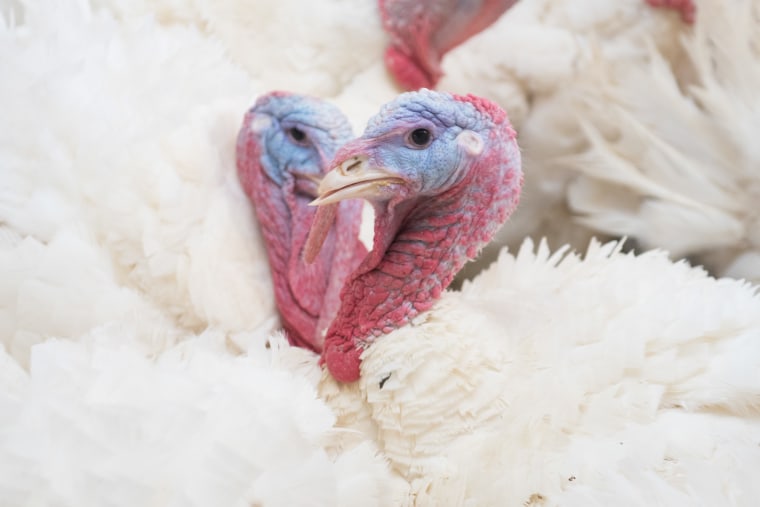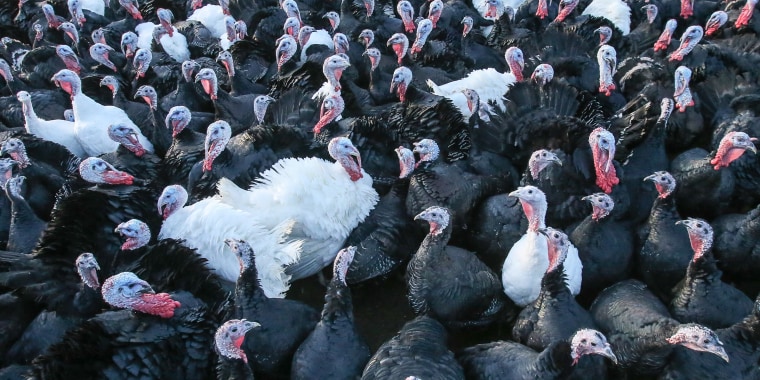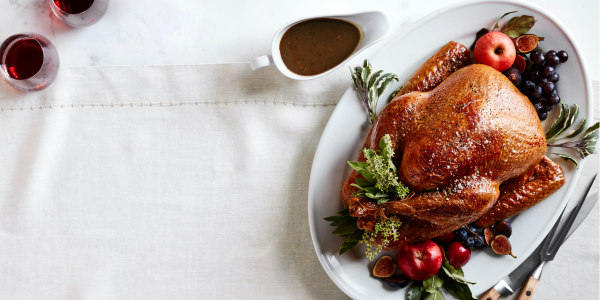Feeling lost when it comes to shopping for the best Thanksgiving turkey? You're not alone.
Every year, the search for the ultimate Thanksgiving bird continues. I've tried fresh, organic turkeys; one year, I reserved a free-range bird directly from a local farm, and, of course, I've enjoyed plenty of frozen turkeys.
But in 2019, the shopping options seem endless and the choices are sometimes tricky to navigate. Some swear by heritage birds, while others are big fans of much larger, conventionally raised turkeys.
Then, there's always the pressure to show up last year's dinner by having an even bigger, or somehow better, bird. It can make just thinking about holiday prep pretty exhausting.
All sides aside (yuk, yuk), planning the centerpiece dish for one of the biggest food events of the year is a big feat and sometimes we need a little help from our friends. In this case, our friends include experts at the National Turkey Federation, the United States Department of Agriculture and even Consumer Reports.
1. How big of a turkey do I need?
The first thing to consider before buying a turkey of any size is how many people you need to feed with the bird. Some types of turkeys simply aren't large enough to serve a massive crowd. Others might leave you with more leftovers than you can handle.
"The National Turkey Federation estimates 45 million turkeys will be consumed this year on Thanksgiving," Beth Breeding, vice president of the federation's communications and marketing team, told TODAY Food. "Out of the approximately 244 million raised during the entire year, that is a lot of birds."
The average sized turkey purchased on Thanksgiving, according to Breeding, is 15 to 16 pounds. The rule of thumb is 1 pound of turkey per person, which factors in bones and a little extra meat for leftovers — because Turkey Day just wouldn't be the same without those awesome next-day sandwiches. So, if you're having 10 people over, you're safe with a bird that's 10 to 12 pounds, for example. Many different types of turkeys, including heritage and organic, can be found in this smaller size range.
"Trends have changed over the years regarding what people purchase," Breeding said. "Several years ago, large whole birds dressed and stuffed were very popular. Now, we're seeing trends ... moving away from cooking the whole bird and just cooking the parts of the turkey they [consumers] like the most."
So, if you're putting on a feast for the entire family, extended family (and maybe even their extended family), large, whole birds might be the best fit. But if your turkey time is going be a rather intimate occasion, buying pre-portioned pieces might be a better idea.
2. How do I find the right turkey type?
There are a few main turkey types out there: heritage birds, broad breasted white (most of which are conventionally raised with antibiotics) and organic.
Broad breasted white turkeys are the most common in U.S. commercial turkey production and the most readily available in stores. According to Breeding, these birds were developed through "genetics and science" to maximize the amount of meat, particularly white meat, on each bird.
According to the U.S. Farm Bureau, broad breasted white turkeys average about $1.42 per pound, or around $22 bucks for a 16-pound turkey. Heritage turkeys, which are much closer to what the Pilgrims likely would have seen roaming around, are leaner and gamier in taste. They are also a lot pricier, costing up to $10 per pound, like this $160 for a 16-pound turkey from Heritage Foods. Depending on where you live in the country, local farms or farmers' markets may have heritage birds at more affordable prices.

The appeal of heritage birds is that they're often considered the real deal since they have not been raised in factory farms and aren't plumped with additives like salt water (which is what makes most turkeys so juicy).
However, a happy medium for someone who likes to eat organic meats would be to purchase an organic bird. Organic turkeys will be less costly than heritage breeds, but still ensure that your turkey is completely free of antibiotics. But it won't be super tough or gamey.
Buying organic turkeys, according to a recent study conducted by Consumer Reports, may actually help prevent the spread antibiotic-resistant bacteria, largely considered to be a major food health crisis today. The research showed that 80% of antibiotics sold in the U.S. are used for livestock to keep them from getting sick. But these antibiotics are a "major factor in the widespread problem of antibiotic resistance" — in other words, illnesses we may get as humans that used to disappear with antibiotic treatment will "no longer respond to the drugs meant to treat and destroy them."
Argyris Magoulas, a technical information specialist at The U.S. Department of Agriculture's Food and Safety Inspection Services told TODAY that while regular broad breasted white turkeys may be administered antibiotics, they cannot, by law, have any added hormones.
3. Fresh vs. frozen turkey: a timeless debate
Breeding told TODAY that most companies flash freeze turkeys as soon as they're processed to ensure that the meat stays as fresh as possible. So if you're buying a conventionally raised turkey from an iconic brand like Butterball, it's likely to have been frozen at some point.
But even "fresh" birds are actually very, very chilly.
"[Grocery store fridges] can be kept quite cold, as cold as 26 degrees," Magoulas said. "When you're buying a fresh turkey like that, you have to cook it within two days or freeze it [at home]."
If you don't want to pick up a fresh-off-the-farm turkey at the very last minute, just brush up on how to properly thaw a frozen turkey and it will still be packed with plenty of flavor if the defrosting is done properly and safely.
4. Not a fan of turkey? Try other mains!
A lot Thanksgiving tables feature alternative proteins like ham or prime rib since some people don't even like turkey at all. If you're hosting a lot of people, it's also a good idea to have options that will satisfy vegetarian and vegan diners. Tofurkey (a soy-based tofu product), or something hearty and festive like a big vegetable lasagna, are also good turkey alternatives.
So are you ready to shop 'til you drop ... for turkey?
Just remember to double check your guest list before deciding on the type of bird to buy and make sure you leave enough time between the grocery store run and the cooking time to let your bird totally thaw out since that process can actually take a few days.


